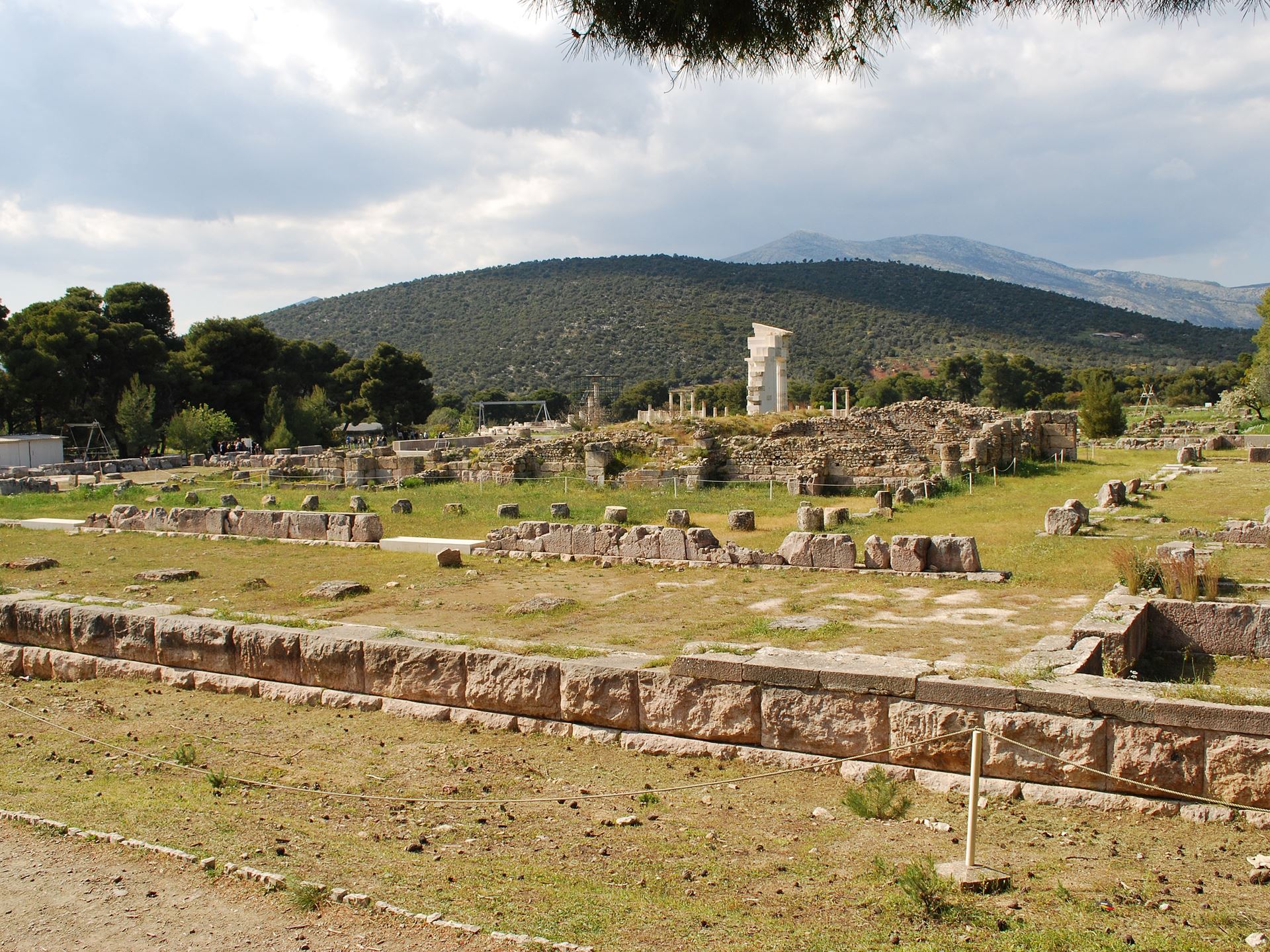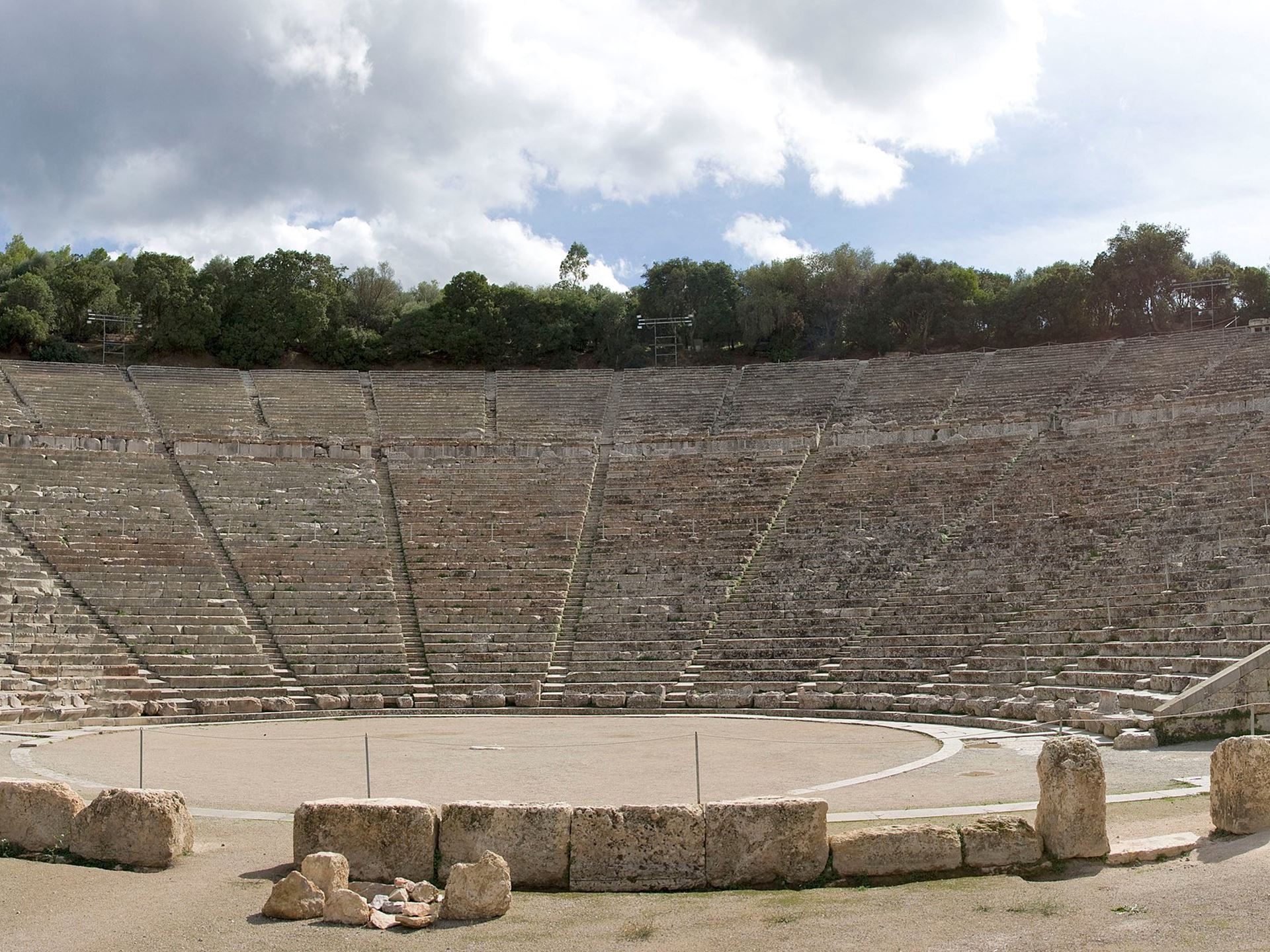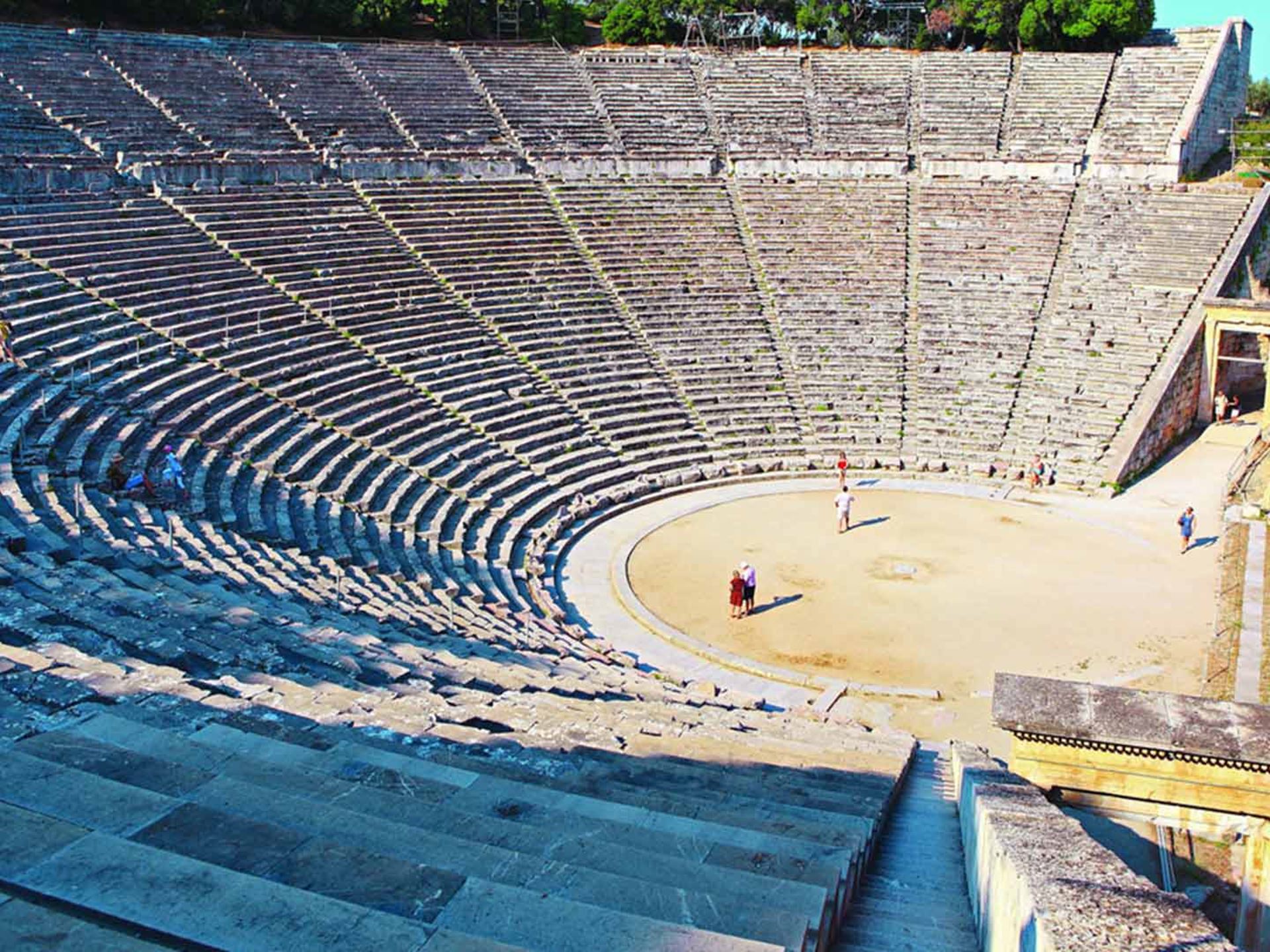The term “Epidaurus” is of Greek origin it was named after the hero Epidauros, son of Apollo. The Asclepeion at Epidaurus was the most celebrated healing center of the Classical world, the place where ill people went in the hope of being cured. The prosperity brought by the asclepeion enabled Epidaurus to construct civic monuments, including the huge theatre that delighted Pausanias for its symmetry and beauty, used again today for dramatic performances, the ceremonial hestiatoreion (banqueting hall), and a palaestra.
The ancient theatre of Epidaurus was designed by Polykleitos the Younger in the 4th century BC. The original 34 rows were extended in Roman times by another 21 rows. As is usual for Greek theatres (and as opposed to Roman ones), the view on a lush landscape behind the scene is an integral part of the theatre itself and is not to be obscured. It seats up to 14,000 people. The theatre has long had a reputation for its exceptional acoustics, which reportedly allowed almost perfect intelligibility of unamplified spoken words from the proscenium or scene to all 14,000 spectators, regardless of their seating, a tale often recounted by tour guides.



